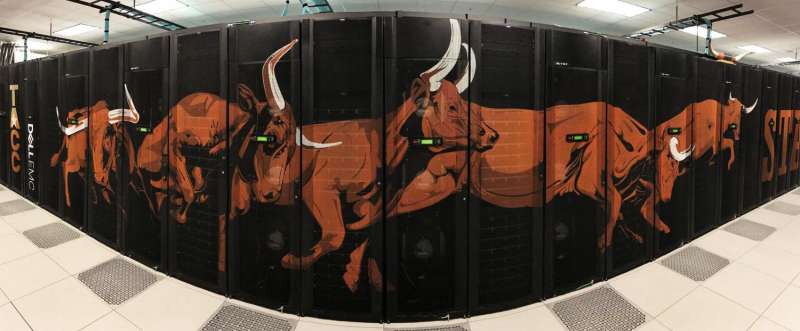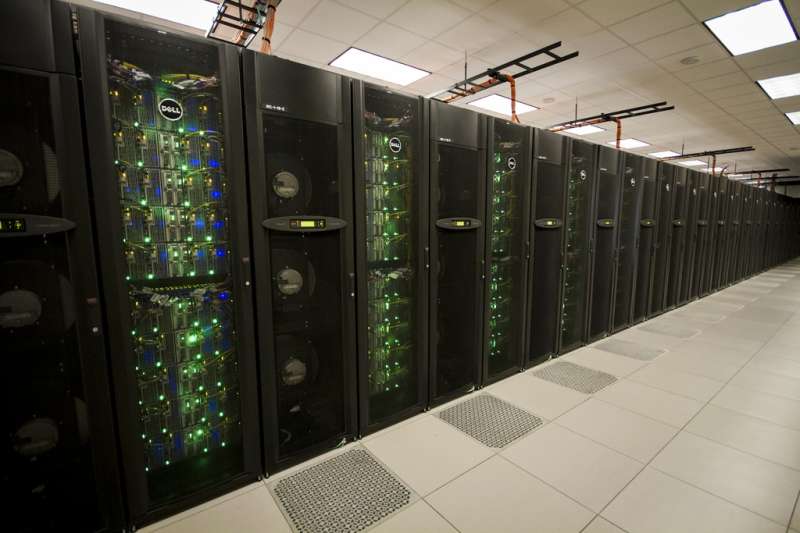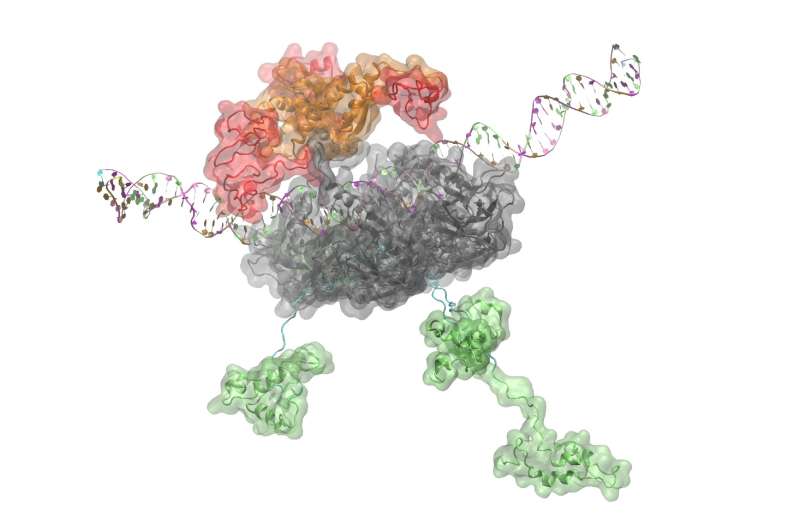Stampede2 storms out of the corral in support of US scientists

Today, the Texas Advanced Computing Center (TACC) dedicated Stampede2, the largest supercomputer at any U.S. university, and one of the most powerful systems in the world in a ceremony at The University of Texas at Austin's J.J. Pickle Research Campus.
"Stampede2 represents a new horizon for academic researchers in the U.S.," said Dan Stanzione, TACC's executive director. "It will serve many thousands of our nation's scientists and engineers, allowing them to improve our competitiveness and ensure that UT Austin remains a leader in computational research for the national open science community."
Representatives from TACC were joined by leaders from The University of Texas at Austin, The University of Texas System, the National Science Foundation (NSF) and industry partners Dell EMC, Intel and Seagate at the event.
"For 16 years, the Texas Advanced Computing Center has earned its reputation for innovation and technological leadership," said Gregory L. Fenves, president of UT Austin. "It is only fitting that TACC has designed and now operates the most powerful supercomputer at any university in the U.S., Stampede2, enabling scientists and engineers to take on the greatest challenges facing society."
Made possible by a $30 million award from NSF, Stampede2 is the newest strategic resource for the nation's academic community and will enable thousands of researchers nationwide, from all disciplines, to answer questions that cannot be addressed through theory or experimentation alone and that require high-performance computing power.

"Building on the success of the initial Stampede system, the Stampede team has partnered with other institutions as well as industry to bring the latest in forward-looking computing technologies combined with deep computational and data science expertise to take on some of the most challenging science and engineering frontiers," said Irene Qualters, director of NSF's Office of Advanced Cyberinfrastructure.
In addition to its massive scale, Stampede2 will be among the first systems to employ cutting-edge computer processor, memory, networking and storage technology from its industry partners.
Phase 1 of the system, which is currently complete, ranked as the 12th most powerful supercomputer in the world on the June Top500 list and contains 4,200 Intel Xeon Phi processor-based nodes and Intel Omni-Path Architecture. These 68-core massively-parallel processors include a new form of memory that improves the speed at which the processors can compute.

Later this summer, Phase 2 will add 1,736 Intel Xeon Scalable processor-based nodes, Intel's biggest data center platform advancement in a decade, giving it a peak performance of 18 petaflops, or 18 quadrillion mathematical operations per second. In addition, Stampede 2 will later add Intel persistent memory, based on 3-D XPoint media. This entirely new class of nonvolatile memory can help turn immense amounts of data into valuable information in real time.
"Intel and TACC have been collaborating for years to provide the high-performance computing (HPC) community the tools they need to make the scientific discoveries and create solutions to address some of society's toughest challenges," said Trish Damkroger, Vice President of Technical Computing at Intel. "Intel's leading solution portfolio for HPC provides the efficient performance, flexible interconnect, and ease of programing to be the foundation of choice for leading supercomputing centers."
Dell EMC supplied Stampede2's PowerEdge server racks and acted as the technological integrator for the project.
"Dell EMC is committed to partnering with leading researchers across the globe to advance high performance computing initiatives. We are proud to have partnered with TACC to deliver Stampede2, an updated system that drives technological research in areas critical to scientific progress," said Armughan Ahmad, senior vice president and general manager, Ready Solutions and Alliances for Dell EMC.
Seagate Technologies provided the storage technology for the system, encompassing 30 petabytes of raw performance and enough capacity for billions of files.
Stampede2's powerful and diverse architecture is well-tuned to support computational scientists and engineers who use a wide range of applications, from researchers who conduct large-scale simulations and data analyses using thousands of processors simultaneously to those who perform smaller computations or who interact with Stampede2 through web-based community platforms like CyVerse, which serves the life sciences community and DesignSafe, which serves the natural hazard engineering community.
The integration of Singularity containers, which can be used to package entire scientific workflows, software and libraries, and even data, will make a large catalogue of applications available to researchers.
TACC staff have worked since January to construct Stampede2 in TACC's state-of-the-art data center, and deployed the system ahead of schedule. Since April, researchers have used the system to conduct large scale scientific studies of gravitational waves, earthquakes, nanoparticles, cancer proteins and severe storms.

Stampede2 will serve the science community through 2021. An additional proposed NSF award for $24 million will support upcoming operations and maintenance costs for the system.
A number of leading universities will collaborate with TACC to provide cyberinfrastructure expertise and services for the project. The partner institutions are: Clemson University, Cornell University, Indiana University, Ohio State University and the University of Colorado.
Stampede2 will be the largest supercomputing resource available to researchers through the NSF-supported Extreme Science and Engineering Discovery Environment (XSEDE), which will allocate time on the supercomputer to researchers based on a competitive peer-review process.
The system continues the important service to the scientific community provided by Stampede1—also supported by NSF—which operated from 2013 to 2017 and over the course of its existence ran 8 million compute jobs in support of tens of thousands of researchers and more than 3,000 science and engineering projects.
Stampede2 will double the peak performance, memory, storage capacity, and bandwidth of its predecessor, while occupying half the physical size and consuming half the power. It will be integrated into TACC's ecosystem of more than 15 advanced computing systems, providing access to long-term storage, scientific visualization, machine learning, and cloud computing capabilities.
Stampede2 comes online at a time when the use of NSF-supported research cyberinfrastructure resources is at an all-time high across all science and engineering disciplines. Since 2005, the number of active institutions using research cyberinfrastructure has doubled, the number of principal investigators has tripled, and the number of active users has quintupled.
Said Stanzione: "Stampede2 will help a growing number of scientists access computation at scale, powering discoveries that change the world."
Provided by University of Texas at Austin




















